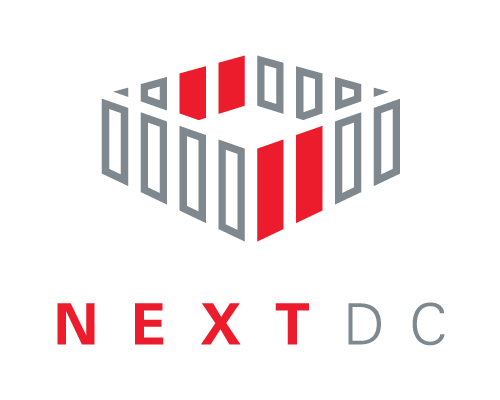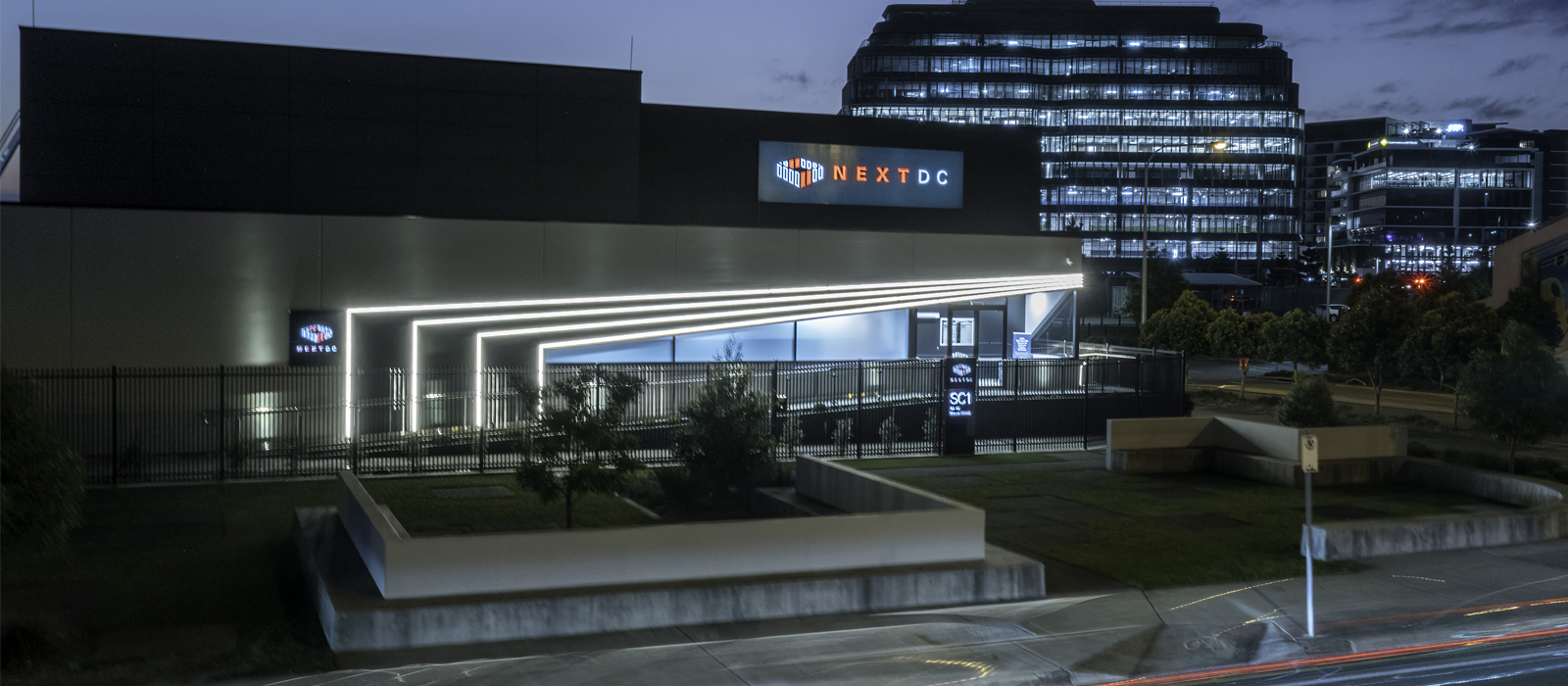

João Marques Lima
Editor, The Tech Capital
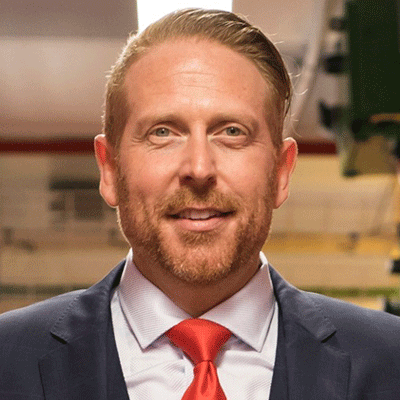
Craig Scroggie
Chief Executive Officer & Managing Director, NEXTDC
Prior to becoming CEO in June 2012, Scroggie served on the board of directors since IPO in 2010 as a non-executive director, including as chairman of the audit and risk management committee.
An executive with more than 25 years’ experience in the ICT industry, today, Scroggie oversees a multibillion-dollar data centre platform with a presence in Brisbane, Canberra, Sydney, Melbourne, Perth, Darwin, and Adelaide, with regional offices in Singapore, Malaysia, and Japan..
As the group prepares to add more than 400MW of power to its portfolio, which is also expanding into the edge computing sphere and building out a new data centre development team in Malaysia, Scroogie spoke to PTC ahead of the Annual Conference in Honolulu, Hawaii from 15 to 18 January 2023.
Scroogie will also be sitting on the “Global Digital Infrastructure” panel, taking place at 11:25 HST on 16 January, in Tapa 2 & 3 where he, alongside other industry executives, will explore how data centre operators in multiple regions are addressing operational and commercial challenges as they meet ever-growing demand from enterprise, cloud, digital content, and other customer segments.
Below is a full transcript of Scroggie’s conversation with The Tech Capital’s João Marques Lima.
What are the main trends you’re witnessing in the market you operate in?
During FY22, the world emerged from the single largest work-from-home experiment in history; the way we live and work has changed forever. In Australia, we are no strangers to managing the most challenging of circumstances Mother Nature can throw at us, whether they be damaging floods or raging bush fires, but our focus on business resilience has never been higher than in a post-pandemic world.
Despite the many and varied new challenges presented by the pandemic, like closed borders, masks, social distancing, and hard lockdowns; we adapted, we innovated, and global communities forged paths to a new world order. We hope these extraordinary events are “once-in-a-lifetime” but they demonstrate the many reasons data centres play a mission-critical role in protecting our economy.
The role colocation data centres play as critical infrastructure to support enterprises and governments’ ability to operate safely, securely, and effectively has never been greater. For many who were unable to easily access or support their on-premise networking, compute, and storage infrastructure, the post-pandemic transition to mission-critical colocation data centres and cloud computing emerged as a compelling event for business continuity and disaster recovery preparedness.
Megatrends are at the forefront of our everyday lives. Author and XPRIZE founder Peter Diamandis calls the intersection of these megatrends “unexpected convergent consequences,” the leveraging of exponential growth technologies such as blockchain, machine learning, artificial intelligence, virtual and augmented reality, 5G, IoT, 3D printing, and cloud computing. The crossroads of our physical and digital worlds has never presented so many opportunities for technology-led advancements in the future of healthcare, commerce, and sustainability.
At the same time, advancements of technology behind these megatrends create significant challenges when used for crime and corruption or to wage cyberwarfare. Our communities are increasingly exposed to the devastating impacts of cybersecurity incidents through data breaches and ransomware attacks, shifting global economic powers, energy sustainability, climate change, food security, and geopolitical instability.
Protecting our critical infrastructure assets has never been more important. At this time, we are reminded not only of the importance of protecting users and their personal information, but the legislative protections that continue to evolve and play an ever-increasing and important role in protecting our critical infrastructure assets, their ownership, and information from bad actors.
Today, more than ever before, the retirement of legacy on-premise data centres is a top customer priority to address operational performance and business resilience. The flexibility of cloud and network services, sovereign security, increasing compute density, better sustainability, and improved energy efficiency are all important benefits of data centre migration. The combination of these factors is a force multiplier, which will reduce risk, cost, and complexity for customers and serve to accelerate migration over the coming years. Doing more with less is an important priority in an environment of rising inflation and supply chain interruptions. This involves our customers extending the previous replacement cycles of their existing infrastructure to address short-to-medium-term supply chain imbalances and improve long-term returns on invested capital.
We are also observing the fluidity of supply chain machinations where positions on procurement are changing from just in time to just in case. An interesting challenge to manage scalability for future growth in the current supply-constrained inflationary environment.
Digital infrastructure is now intrinsic, deeply ingrained in our daily lives. From healthcare to education, lifestyle, and entertainment. That is not going to slow down anytime soon. Indeed, it is universally accepted that digitisation is going to continue to accelerate. We are increasingly operating in an application-driven world.
We are living in extraordinary times – technology is pervasive and global data creation is about to explode. According to Forbes, 90% of the world’s data was generated in the last two years with more than 2.5 quintillion bytes of data being created each day. We are in an information economy fuelled by data, the currency of our digital age.
Today, interconnected infrastructure connects everyone, everywhere, to everything. This is the new digital reality – the fourth industrial revolution. This takes adoption of digital services to the next level. It introduces smart autonomous systems, managing the ever-increasing volumes of data. Modern businesses are increasingly powered by the cloud. Technology is utilised in interconnected environments leveraging big data, machine learning, and the Internet of Things as drivers of growth. This revolution is enabling the reinvention of entire industries and society as a whole.
Technology is now expected to make organisations more flexible and agile, as well as creating new levels of security, productivity, sustainability, and innovation. Colocation combined with on-demand computing can be a deflationary force for customers in these ever-increasing inflationary times.
We all play a pivotal role in this new fourth industrial revolution where technology is being built upon technology, as increasing compute density and increasing power demands requires next-generation infrastructure to support the future compute needs of hyperscale and enterprise.
Today’s business leaders understand that they cannot be sure where the next disruption is coming from. The cloud allows a flexible solution that is agile, responsive, and scalable. In Flexera’s 2022 State of the Cloud Report, 89% of organisations surveyed are using more than one public cloud platform and 80% are using hybridised combinations of public and private cloud environments. The best way for organisations to capitalise on digital trends is by embracing flexible network, compute, and storage resources that enable rapid scaling up and down to meet their ever-changing needs.
The enterprises of the future are intertwined with the concept of hybrid IT; the efficient allocation of physical and virtual resources to enable capability when and where it is needed. These trends have accelerated exponentially over the past two years. A study by 451 Research found that since the start of the pandemic, 84% of organisations now acknowledge that hybrid IT is embedded in their business model.
Where is the Australian market headed in terms of demand, size, players, data sovereignty, etc.?
Sydney was the first major megawatt computing market in Australia and has been the home to many organisations deploying their infrastructure in Australia. The size and scale of the region is significantly larger than the other capital cities and is now hundreds of megawatts of computing spread across multiple availability zones and continues to grow. The Sydney market has the potential to reach a gigawatt of computing capacity over the coming years.
The industry has been taken slightly by surprise with Jim Chanos’ comments. What’s your take on it?
Same thesis has been posed plenty of times before. I don’t think this short thesis is any different. Betting against data centres’ role in the future of hybrid IT, and public cloud not needing colocation data centres is a binary view. I certainly don’t believe it’s that simple, it’s not a zero-sum game. There are multiple winners and this thesis does not consider that game theory. I think those in our industry have a deep insight into how data, networks, and compute have and will continue to evolve.
What has the journey been like from start-up to being an ASX Top 100 Public Company?
I would simply describe this using one of my favourite quotes from Bill Gates, “Most people overestimate what they can achieve in a year and underestimate what they can achieve in ten years.” It is believed Gates was paraphrasing Roy Amara, a Stanford computer scientist. In the 1960s, Amara told colleagues that he believed that “We overestimate the impact of technology in the short-term and underestimate the effect in the long run.”
In 1999, author and inventor Ray Kurzweil posited the Law of Accelerating Change — that evolutionary systems develop at an exponential rate. While this is most obvious for technology, Kurzweil hypothesized that the principle is relevant in numerous other areas. In an essay on the topic, he wrote: “An analysis of the history of technology,” shows that technological change is exponential, contrary to the common sense “intuitive linear” view. So, we will not experience 100 years of progress in the 21st century — it will be more like 20,000 years of progress at today’s rate. The “returns,” such as chip speed and cost effectiveness also increase exponentially.
Just think about how much has changed for us in the last 10 years in Sydney. S1 was designed for 11MW, S2 for 30MW, S3 for 80MW, and in the next few years the S4 campus will have a target future capacity of 300MW. We have witnessed an order of magnitude change from customers in one decade. What will the next decade hold? We haven’t seen anything yet, it’s just getting started.
What has NEXTDC been doing recently around portfolio expansion and capital raising? What future expansions are planned as well?
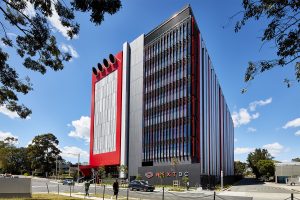 S2 was the first of our second generation builds and one of our most valuable customer learning experiences. It was the first high-rise, hyperscale development project undertaken and has informed the methodologies underpinning the success of our third-generation developments today. Whilst S2 is largely sold, during FY22 it underwent seamless critical HV power upgrades that continue to support customer IT load growth and underpin strong earning leverage in FY22 and beyond.
S2 was the first of our second generation builds and one of our most valuable customer learning experiences. It was the first high-rise, hyperscale development project undertaken and has informed the methodologies underpinning the success of our third-generation developments today. Whilst S2 is largely sold, during FY22 it underwent seamless critical HV power upgrades that continue to support customer IT load growth and underpin strong earning leverage in FY22 and beyond.
In Melbourne, the M2 campus had its target IT capacity increased by 40MW to 100MW, through the acquisition of adjacent expansion land. Also, in FY22, 6MW of new capacity was added during the reporting period to support customer growth. Additional land has been secured adjacent to both M2 and M3 for long-term expansions to support forecasted customer growth. With two significant public cloud platforms launching in Victoria, we are well placed to convert customer reservations over time to support their future success in that market.
Bringing our third-generation data centres online now is significant for the medium-term domestic growth of the company. Having a strong pipeline of scalable inventory in Australia’s two largest markets is critical to enable us to support our customers long-term strategies. One of our most exciting highlights in FY22 were the advances we made in extending the infrastructure platform we are building to meet our customers’ growth requirements in Australia’s two largest markets and cater for state availability zones as well as dual business continuity and disaster recovery solutions.
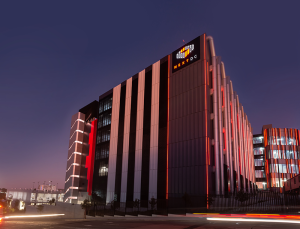 S3 Sydney opened on time and on budget, with 12MW of capacity and the entire sovereign NEXTDC ecosystem available from day one. S3, when fully complete, will be our largest Sydney facility to date and bring 80MW of IT load to support our customers’ growth requirements. This magnificent facility is the fifth Uptime Institute Tier IV certified facility in our fleet.
S3 Sydney opened on time and on budget, with 12MW of capacity and the entire sovereign NEXTDC ecosystem available from day one. S3, when fully complete, will be our largest Sydney facility to date and bring 80MW of IT load to support our customers’ growth requirements. This magnificent facility is the fifth Uptime Institute Tier IV certified facility in our fleet.
Construction at M3 Melbourne progressed quickly during FY22
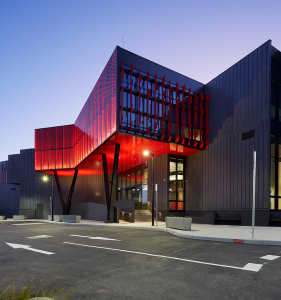
with stage one completed early in FY23. The M3 site was developed and launched within 12 months, quite an achievement given a large part of the projects’ base building construction took place during lockdowns. We formally opened the M3 facility in October with 13.5MW of initial built capacity and an additional 4.5MW being brought forward to support our enterprise pipeline and anchor hyperscale capacity. M3 is designed to support 150MW of IT load over time in a campus configuration. It is now the sixth Uptime Institute Tier IV certified facility in our fleet.
Both the S3 and M3 facilities are strategically located nine kilometers from their respective CBDs making them large-scale centerpieces in our metro access networks. As established and new cloud platforms scale into the regions, our flexible and agile services will position us well. We are poised to take full advantage of our customers’ future growth opportunities which in turn drives further market growth across the digital economy.
Our extensive enterprise and government footprint continues to attract new cloud on-ramps to our metropolitan locations allowing customers to leverage secure, low-cost, and low-latency connectivity to public and private clouds.
We are keeping an eye on regional growth opportunities. To this end, we have secured expansion land at our P1 Perth, P2 Perth, and B2 Brisbane data centres, putting us in a great position to continue supporting growth in those deeply established, network-rich regional ecosystems. We expect continued growth in Western Australia where the resources industry continues to accelerate its digital transformation.
Connected by subsea cable to Sydney and Singapore, P2 is certified as Tier IV for design and construction and is generating significant resonance with the state government and the booming mining and exploration sector. B2, also certified as Tier IV for design and construction, underwent its third data hall expansion during FY22, and now has new inventory on hand to support client growth over the next 12 months.
To cap off our regional expansion work in FY22, we also secured land for new government supported developments in both Darwin and Adelaide.
In conjunction with the Northern Territory Government, we announced plans to develop a new, world-class data centre in Darwin (D1), a facility which will underpin its “Digital Territory” strategy. With multiple new international subsea and domestic cable networks planned to terminate or transition through Darwin, the NT is rapidly emerging as a gateway for stable, proximate, and sovereign secure data centre services for Asia. D1 will be home to the Vocus Darwin-Jakarta Singapore Cable (DJSC). Design and development approval for D1 is well progressed and construction is expected to start during the latter part of FY23.
Completing our presence in mainland capital cities, we also reached an agreement with the South Australian government to purchase land in Adelaide’s CBD. In partnership with the state and the City of Adelaide, A1 Adelaide will become the centerpiece of a high-tech innovation growth agenda and further extends the SA government’s significant work at the “Lot Fourteen” technology precinct.
We are also expanding to support our clients at the edge of their networks. Edge computing is a distributed computing model where data processing takes place right at the network’s edge, close to the data source. This model supports a local compute service, where only the data that needs to be processed is sent to metro sites as opposed to sending all data to central servers for processing. This can reduce both latency and energy consumption by as much as 60%. Edge computing can help reduce the carbon footprint of data centres by using renewable energy sources such as solar and wind power at the edge, providing financial, operational, latency, and sustainability benefits to customers.
Our edge strategy is customer-led and commenced with the opening of our first edge facility at Maroochydore on the Sunshine Coast in partnership with the Sunshine Coast Regional Council. SC1 hosts the landing station for the 7,000km Japan-Guam-Australia South (JGA-S) submarine cable – the first east coast submarine cable outside Sydney. It is estimated by RTI that one-third of Australia’s Internet traffic will pass through SC1 by the end of 2024. This is a very exciting piece of communications infrastructure that supports the Sunshine Coast’s regional economic development plans in the lead up to the Olympics in 2032.
Our edge data centres will be designed for regional data-intensive industries, supporting applications that range from specialised location-specific submarine cable landing stations, 5G networks, satellite uplinks, and remote operations centres. Advanced autonomous mines, mining telemetry services, renewable energy, agriculture, and the delivery of government services are other areas where demand for edge data centres is emerging. These industries are adopting automation and remote operations through latency-sensitive applications, processing substantial amounts of data in real time, something previously uncatered for. We continue to collaborate closely with our customers on designing solutions that meet their future edge network and computing needs. This is an evolving area of interest that we are ready to support.
We have secured land in the Pilbara region for the development of a new edge data centre in Port Hedland (PH1). This supports our customers’ specific needs for these specialised edge computing environments in both the telecommunications and mining industries. PH1 will be home to the new Vocus cable landing station in Port Hedland for the North-West Cable System infrastructure that runs from Port Hedland to Darwin via the north-west shelf.
With liquidity of approximately AUD 1.9 billion, the business has the flexibility to take advantage of value-enhancing growth opportunities as they arise, as well as to continue to invest in the business as the company’s record sales pipeline continues to convert into contractual commitments.
Where are you seeing the most demand coming from? Especially around hyperscale; is there a big difference in servicing a government versus a hyperscale/enterprise for example?
Hyperscale growth is a big focus for the industry, and we remain committed to working closely to support those very important public and private cloud and content customers. It is, however, only one element of our business; we have always, and we continue to have a deep focus on the diversity of our ecosystem through enterprise, government, networks, and service providers.
Digital transformation continues to change the world in exciting and disruptive ways. With customers connecting to multiple clouds, our ecosystem of over 770 of Australia’s ICT and digital services providers on our AXON platform, we are well positioned to provide our customers with access to the widest range of premium-grade, multi-cloud vendors on the market. With more than 70 networks and 15 public cloud on-ramps within our ecosystem, we enable diversity in telecommunications provider choice combined with direct access to the world’s leading cloud platforms.
In FY22, we announced the launch of our fourth AWS Direct Connect interconnection platform at S2 Sydney. In addition to this, we announced Australia-wide connectivity to Google Cloud through our AXON network with new physical direct on-ramp access points available at M2 Melbourne and B2 Brisbane. These ecosystems are a key enabler for the Internet of Things, where real-time data transfer is critical between cloud platforms, on-premise systems, and users. From the core to the edge, billions of devices, trillions of sensors, and billions of users all combine to leverage unparalleled network and compute scale.
Submarine cable networks continue to play a critical role for both the diversity and risk mitigation of Internet services in Australia and play a vital role inside our network connectivity ecosystem. We are very excited about our subsea strategic partnerships with Vocus to support their Project Horizon cable infrastructure at our D1 Darwin and PH1 Port Hedland data centres, and also our partnership with RTI at our SC1 Sunshine Coast data centre as home to the JGSA cable, and P2 Perth as home to the Indigo Consortium cable system. It is fair to say that the demand for subsea connectivity is once again outgrowing the existing capabilities. We continue to collaborate closely with our customers on new locations to support more critical landing stations and direct interconnect services to facilitate the hand-off of subsea traffic to data centre, cloud, metro, intercapital, 5G, and satellite networks.
5G rollouts across the country are providing new connectivity to regions that need it. 5G can connect more than 1 million devices per square km with latency performance 200 times better than 4G. 5G will deliver up to 1,000 times more capacity than 4G. Australia is a global leader in 5G rollout. By the end of 2021, Australia’s mobile network operators had installed around 4,000 operational 5G base stations across the country. The population coverage puts Australia in the top tier of nations rolling out innovative technology.
We have been fortunate to support the rollout of many of these systems throughout our national network. Today, according to the GSMA Mobile Connectivity Index, Australia is ranked third in 5G connected devices per capita. By 2025, it is expected that 95% of Australians will have 5G coverage. Austrade recently partnered with PwC to explore potential investment opportunities within Australian 5G. The research found Australia’s world-leading 5G ecosystem has the potential to unlock billions of dollars in productivity improvements across multiple industries that include healthcare, mining, transport, manufacturing, and utilities. Satellite is no longer an expensive niche technology. Lots of bandwidth is coming online, especially with the big geostationary orbit satellites driving the cost of bandwidth down.
Supporting the emerging space and satellite industry is an exciting area of growth for the company. We are thrilled to be working closely with the team at Viasat and our partner Telstra to support the rollout of Viasat’s new ViaSat-3 satellite infrastructure. The ground infrastructure Viasat is building for the ViaSat-3 Asia-Pacific satellite is not only located in Australia but also supports all of Asia. If you have flown in a Qantas airplane and connected to in-flight Wi-Fi, you would already be familiar with some of Viasat’s services today. Satellite connects the unconnected. The new generation of satellites, with their new capabilities and lower cost of bandwidth, are supporting new innovative use cases. For Viasat the “killer app” is mobility and other use cases include IoT to space, mobiles to space, earth observation, and more. A very exciting area in the future.
Whether it be 5G, satellite, subsea, metro, or cloud connect, the role our networks play is critically important to serve the future of work. In a post-pandemic world where digital headquarters and remote work features heavily, information increasingly lives outside organisations rather than inside them. Both the architecture of our networks, the latency of application and database response times, and the security and resiliency of our systems needs to continue to evolve. Having access to secure on demand elastic network services is very important to support the new ways in which we work and live. Work is increasingly being categorised as something we do, not somewhere we go. Its location will be defined by the outcomes that are needed, the type of activities undertaken, and the people involved.
You beat full year earnings guidance in your last results. What can we expect from NEXTDC in terms of books during FY23?
We have experienced a strong start to FY23. The guidance we have provided reflects the company’s expectation for further solid revenue growth of between 17% and 22% compared to FY22. We expect underlying EBITDA to rise by between 12% and 17% and capital expenditure to land in the range of AUD 380 million to AUD 420 million.
Can you give us an overview of NEXTDC’s ESG strategy?
All organisations need to focus on sustainably managing their technology and infrastructure. We are focussed on that journey and know that responsible and environmentally sound data centre practises are not only a moral imperative but also a competitive advantage.
We are committed to supporting our customers’ needs for building digital infrastructure that is dependable, secure, and energy efficient. We have prioritised the procurement of renewable energy through increased engagement with our energy providers and the further development of our rooftop solar arrays, now featured at our Melbourne, Sydney, and Perth data centres. The future of power in our industry is an incredibly significant focus and when considering the current energy market challenges, securing it will continue to be an important factor in our expansion plans.
In FY22, we saw 188% growth in new customers selecting our NEXTneutral offering, a simple ONEDC opt-in solution enabling our customers to offset the carbon emissions from their IT footprint in our facilities. It allows them to make simple, effective progress toward their own sustainability goals. NEXTneutral builds on our commitment to sustainability and our success in being accredited 100% carbon neutral for our own corporate operations under the Australian government’s Climate Active program.
Our goal is to reach 100% renewable energy in our operations by 2030. We seek to take action to minimise carbon emissions directly, and where we cannot avoid it, we procure carbon credits for our business through the Qantas Future Planet (QFP) program. We have been a principal partner to the Melbourne Renewable Energy Project (MREP) since its inception in 2014. MREP’s 80MW Crowlands Wind Farm in Victoria began delivering power to the grid in January 2019.
Our NABERS certification continues to demonstrate and independently certify our highly efficient designs and operational standards. Our facilities are also compliant with and certify to the industry leading ISO 14001 standard for environmental management systems. Our evaporative cooling designs allow us to deliver the lowest possible PUE to our customers. This topic is a significant focus for the industry, a driver of cost saving for customers. Moreover, this is critically important for the environment, both today and in the future.
Waste management is playing an increasingly significant role in our sustainability strategy. We recycle all cardboard, fluorescent light tubes, and manage e-waste for our own operations and for our clients at our facilities. We have set achievable targets for zero waste with the facilities management and central operations teams who work diligently on the processes and infrastructure to achieve this. It is not any one action, but a combination of many actions that will continue to create positive momentum in our commitment to achieving sustainable operations.
NEXTDC has long been committed to our people building a keen sense of connection with their local communities. Our “Live to Give” Corporate Social Responsibility program allows our team – and the company – to give back to our communities and continues to be an important part of working at NEXTDC. With interest rates and the cost of living on the rise, there has never been a more crucial time to support those in our community that need it most.
Our corporate partnerships with The Smith Family, UN Women, SolarBuddy, and The Red Cross further underscore our commitment to giving back. We are also part of the Pledge 1% movement and have an active workplace giving program with dollar-for-dollar donation matching for partner charitable organisations.
In FY22, we also increased the number of paid volunteer days for every employee from one to three days and introduced a paid emergency management leave benefit of up to four weeks. These benefits served a critical purpose when recent extreme weather events affected some of our team members and their communities. We encourage team members to participate in skills-based volunteering opportunities such as emergency response, marine rescue, and bushfire brigades.
At NEXTDC, we continue to build upon a culture of respect and belonging, aiming to engrain inclusion and diversity as a central tenet. We believe that continuing to focus on diversity will drive new ways of thinking, innovation, and therefore create further competitive advantage. Currently, 33% of NEXTDC’s workforce is female with a strong representation of mature workers. We are a signatory to the 40:40 vision statement and have adopted targets to achieve gender balance at the executive level by 2030. There are functions in the business that reflect female participation rates at or above 50%. The company also demonstrates gender diversity at board level, where one third of our non-executive board members are female.
How is NEXTDC preparing to operate during this period of high-inflation and supply constrained economic environment?
In FY23, we are facing very different economic conditions to those faced in recent years, particularly when it comes to rising inflation and interest rates as well as significantly higher power prices.
With respect to inflation, the company has significant revenue offsets in the form of built in contractual revenue escalators as well as having been fortunate in contracting for its major construction projects at fixed price rates at a time before the costs of construction started rising. As a result, we’re in an enviable position of having recently completed major construction projects and added significant capacity at pre-escalated costs.
On the topic of power prices, the company has strong power cost protection built into contracts in the form of power pass through mechanisms, resulting in most power costs being passed directly through to customers.
Our strategies relating to energy efficiency are critically important for success to ensure customers have the lowest possible power costs facilitated by our highly efficient cooling designs that deliver the industry’s lowest independently government certified operating PUE’s in Australia.
Will the business at some point venture out beyond Australia’s borders?
A few years ago, we established a small team of key personnel in Asia to begin exploring the opportunity to develop a regional business in Asia that can replicate the success NEXTDC has experienced in Australia over the past decade. Our strategy is to build a highly-diversified ecosystem that is consistent with our core enterprise network and colocation products and go-to-market strategy.
Whilst the Singapore government has not approved any further land allocations for data centres since introducing its moratorium on further developments, and though COVID-19 has slowed travel to advance our plans in the past two years, this has not dampened our enthusiasm for the region.
The e-Conomy SEA 2022 report, jointly compiled by Google, Singapore’s Temasek, and Bain & Company, focuses on Southeast Asia’s largest and most digitally connected economies. It predicted that the region’s digital economy would top AUD 200 billion in 2022 – outpacing previous projections.
We remain committed to finding a disciplined path to building a successful business in the East Asia (ex-China) region over the next decade. We continue to identify new opportunities for greenfield development in partnership with our customers in these exciting emerging markets. We will share more details about our expansion plans in Asia in the new year. Today, outside of Australia, we have offices and personnel in Singapore, Malaysia, and Japan.
However, you will see several job postings recently for project managers, procurement managers, engineers, and capital works team members. If you live in Malaysia or Singapore and are interested in joining our team, there are a lot of exciting new opportunities underway and many more to come.
How important has PTC been to you throughout your career and for NEXTDC as a business?
I have been attending the PTC Annual Conference for the last decade. It has been and continues to be the most valuable networking event in the industry.
What do you expect of PTC’23?
No video meetings. 😊


